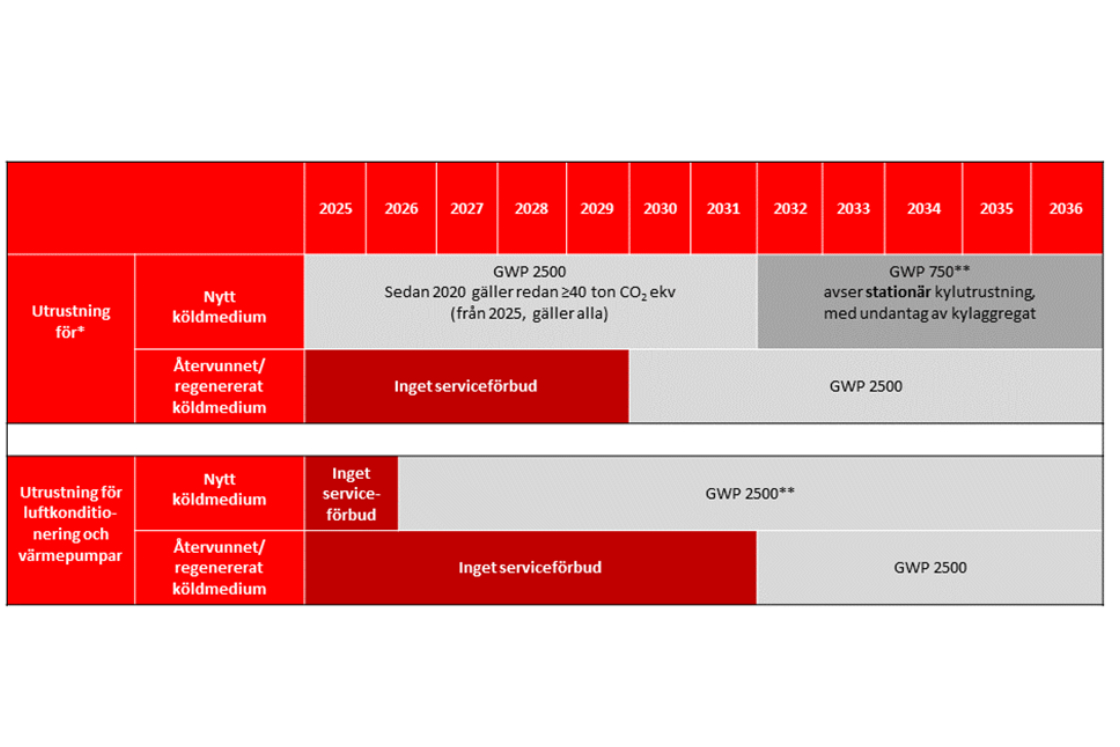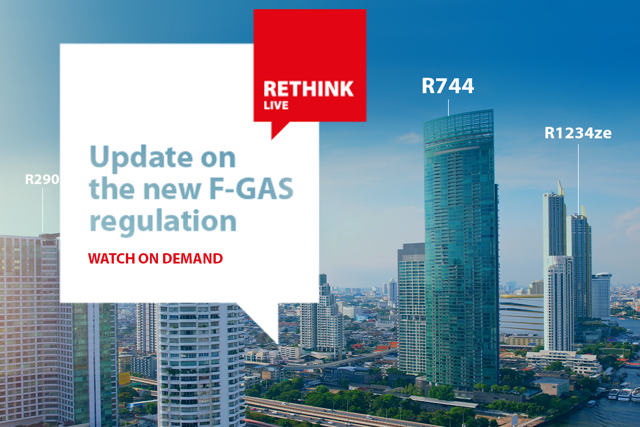Regulatory changes and the derived implications for the RACHP Industry are constantly increasing. The main driver for those changes are environmental concerns (health), resource efficiency and mitigation of climate change. The EU F-gas regulation is considered a front runner, preceding the Kigali Amendment to the Montreal Protocol and going beyond the latter. The legal text as of November 2023 still needs final polishing and it is recommended to access detailed information in the official text.

R404A/R507 制冷剂所面临的压力尤其之大,并且很可能会被所有商用系统淘汰。欧盟配额机制已经形成,2016 年完成了逐渐削减方案的第一步,与基准水平相比,配额减少了 7%。此配额机制为散装气体生产商和进口商分配配额。配额获得者可以通过授权方式将他们的部分配额转移给预收费配额的进口商。可以再次转移授权,但是只能进行一次。必须在中央登记机构报告所有活动,以确保合规。关于详细介绍和 Q&A 文件,请访问欧盟主页或 EPEE 主页。对于逐渐削减计划,在基准水平中未考虑预充注设备的进口和使用 HFC 替代品改造 R22 系统的需求。预充注进口设备估计为正式基准水平的 11%。从 2017 年开始,预充注单元中的 HFC 进口量将被纳入正式配额,这将对 HFC 的供应造成更大的压力。
通过将预充注进口设备需求纳入削减计划步骤,并且假设多年来保持恒定的消耗量(以公吨为单位),情况将会变得非常不同。到 2018 年,配额将降低至基准水平的 56%,低于以前的 63%。2030 年目标是基准水平的 21%,但实际可能仅为 19%。

各部门贡献值
行业概述中显示了到 2021年削减量的各行业预期组成。很明显,冷冻冷藏行业在削减计划中占最大比例,而空调和热泵在随后的削减比例会增大。
2019 年底的观察表明,最常见类型的 HFC,像 R404A、R134a 和最近 R410A 制冷剂的价格曾经上涨了 400% 至 600%,但在今年,价格正在降低。只能建议制定详细计划以替代高 GWP 的制冷剂,尤其是 R404A。R410A 是唯一没有A1类低 GWP替代物质的制冷剂(见图 11)。因此,尽管价格昂贵,R410A 可能是未来数年内唯一会继续使用的旧型主流 HFC。可能会出现快速切换到较低 GWP 替代制冷剂的情况,避免市场货源短缺。

新设备禁止使用规定
作为削减计划的补充,规定了禁止在新设备和维修设备上使用高 GWP 制冷剂。虽然维修禁令离未来投入实施还很遥远,但仍在当前新设备的预期使用寿命之内。这就迫使行业停止生产 R404A/507 系统。

Service bans:
Service bans have been strengthened. As of 2025, also small refrigeration systems will no longer be allowed to use virgin refrigerant with a GWP >2500. This will target old systems still relying on R404A. From 2032 the limit will be further decreased to a GWP 750. Service and maintenance of AC and HP equipment will likewise be restricted to a GWP level of 2500 from 2026. It is important to notice that reclaimed and recycled refrigerant can still be used.



